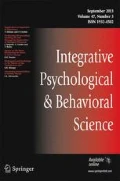Abstract
Human beings exist in a biological and social system from a micro to a macro level, by means of “collectivity”, a dynamic collaboration that they have established together with the elements in that system in a way to complement each other and realize a common goal. Many neuroscientific concepts used today to explain neuronal processes from which mental functions originate are far from searching answers to traditional philosophical questions. However, the brain — as the generator of highly abstract concepts — is so complex that it cannot be explained by minimalistic approaches. The concept of connectome used in recent years to describe neuronal connections from which brain functions originate exemplifies this minimalistic approach, because it only describes structural and functional connections but does not look at brain functions in a holistic view. For this reason, we propose the concept of collectome — to replace the concept of connectome — that describes a homeomorphic and homotopic neuronal framework that has a bicontinuous style of work from micro to macroscale which is based on fractal rules.

Similar content being viewed by others
References
Anders, S., Heinzle, J., Weiskopf, N., Ethofer, T., & Haynes, J. D. (2011). Flow of affective information between communicating brains. Neuroimage, 54(1), 439–446.
Başar, E. (1999). Brain function and oscillations: Volume II: Integrative brain function. Springer Science & Business Media: Neurophysiology and cognitive processes.
Buzsáki, G. (2006). Rhythms of the brain. Oxford University Press.
Cebolla, A. M., & Cheron, G. (2019). Understanding neural oscillations in the human brain: From movement to consciousness and vice & versa. Frontiers in Psychology, 10, 1930.
Konvalinka, I., & Roepstorff, A. (2012). The two-brain approach: How can mutually interacting brains teach us something about social interaction? Frontiers in Human Neuroscience, 6, 215.
Korkmaz, B. (2011). Theory of mind and neurodevelopmental disorders of childhood. Pediatric Research, 69, 101R–108R.
Ladoux, B., & Mège, R. M. (2017). Mechanobiology of collective cell behaviours. Nature Reviews Molecular Cell Biology, 18(12), 743–757.
Lamb, T. D. (2016). Why rods and cones? Eye (London, England), 30(2), 179–185.
Lamm, C., & Silani, G. (2014). Collective emotions perspectives from psychology, philosophy, and sociology. In C. von Scheve & M. Salmella (Eds.), Insights into collective emotions from the social neuroscience of empathy. Oxford University Press.
Liu, D., Liu, S., Liu, X., Zhang, C., Li, A., Jin, C., Chen, Y., Wang, H., & Zhang, X. (2018). Interactive brain activity: Review and progress on eeg-based hyperscanning in social interactions. Frontiers in Psychology, 9, 1862.
Losa, G. A. (2015). The fractal Organization of the Nervous System. In M. Emmer (Ed.), Imagine math 3. Cham: Springer.
Mazzarello, P. (2018). From images to physiology: A strange paradox at the origin of modern neuroscience. Progress in Brain Research, 243, 233–256.
Pérez, A., Carreiras, M., & Duñabeitia, J. A. (2017). Brain-to-brain entrainment: EEG interbrain synchronization while speaking and listening. Scientific Reports, 7(1), 4190.
Preston, S. D., & De Waal, F. B. M. (2002). Empathy: Its ultimate and proximate bases. Behavioral and Brain Sciences, 25, 1–72.
Rizzolatti, G., & Craighero, L. (2004). The mirror-neuron system. Annual Review of Neuroscience, 27, 169–192.
Shepherd, G. (2009). Neuron doctrine: Historical background. In L. R. Squire (Ed.), Encyclopedia of neuroscience (pp. 691–696). New York: Elsevier.
Shepherd, G. M. (2015). Foundations of the neuron doctrine: 25th (anniversary ed.). Modern Revisions of the Neuron Doctrine: Oxford University Press.
Sporns, O. (2013). The human connectome: Origins and challenges. Neuroimage, 80, 53–61.
Stephens, G. J., Silbert, L. J., & Hasson, U. (2010). Speaker–listener neural coupling underlies successful communication. Proceedings of the National Academy of Sciences of the United States of America, 107(32), 14425–14430.
Stoker, H.S. (2015). General, organic, and biological chemistry. Cengage Learning.
Swanson, L. W., & Lichtman, J. W. (2016). From Cajal to connectome and beyond. Annual Review of Neuroscience, 39(1), 197–216.
Werner, G. (2010). Fractals in the nervous system: Conceptual implications for theoretical neuroscience. Frontiers in Physiology, 1, 15.
Xiang, M., Zhou, H., & Nathans, J. (1996). Molecular biology of retinal ganglion cells. Proceedings of the National Academy of Sciences of the United States of America, 93(2), 596–601.
Zahadat, P., & Hofstadler, D. N. (2019). Toward a theory of collective resource distribution: A study of a dynamic morphogenesis controller. Swarm Intelligence, 13(3–4), 347–380.
Funding
This research did not receive any specific grant from funding agencies in the public, commercial, or not-for-profit sectors.
Author information
Authors and Affiliations
Corresponding author
Ethics declarations
Conflict of Interest
All of the authors declare that they have no conflict of interest.
Ethical Approval
This article does not contain any studies with human participants or animals performed by any of the authors.
Additional information
Publisher’s Note
Springer Nature remains neutral with regard to jurisdictional claims in published maps and institutional affiliations.
Rights and permissions
About this article
Cite this article
Ceylan, M.E., Yertutanol, F.D.K., Dönmez, A. et al. CONNECTOME or COLLECTOME? A NEUROPHILOSOPHICAL Perspective. Integr. psych. behav. 56, 266–279 (2022). https://doi.org/10.1007/s12124-020-09576-7
Accepted:
Published:
Issue Date:
DOI: https://doi.org/10.1007/s12124-020-09576-7




